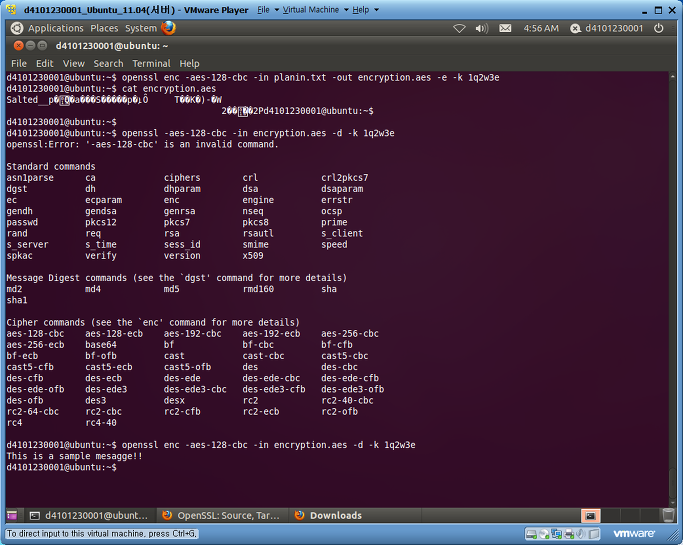Generate Aes 256 Key Using Openssl
This post briefly describes how to utilise AES to encrypt and decrypt files with OpenSSL.
AES - Advanced Encryption Standard (also known as Rijndael).
/windows-answer-key-file-generator.html. 30 show the 20 bits key stream generated from. OpenSSL - Cryptography and SSL/TLS Toolkit
We’ll walk through the following steps:
$ openssl list-cipher-algorithms The output gives you a list of ciphers with its variations in key size and mode of operation. For example AES-256-CBC for AES with key size 256 bits in CBC-mode. Some ciphers also have short names, for example the one just mentioned is also known as aes256. These names are case insensitive. When you use openssl enc, you need to select a mode of operation in addition to the key size, e.g. Aes-256-cbc specifies the mode CBC with PKCS#5 padding. CBC specifies how to encrypt multiple 128-bit blocks, and PKCS#5 specifies how to pad the message to a whole number of blocks.) AES-256 requires a 256-bit key, period. Hi experts, Please help me to create AES 128 encrypted openssl certificate which can be used for Apache SSL configuration. I am able to create RSA/DSA keys with AES128 encryption using following command. # openssl genrsa -aes128 -out key.pem Is it possible to create AES 128 encrypted key without. Jul 29, 2019 This then generate the required 256-bit key and IV (Initialisation Vector). In OpenSSL we use the EVP method to generate the key and IV. empire total war free download utorrent Openssl enc -aes-256-cbc -pass pass. Dec 28, 2017 Generate 4096-bit RSA private key, encrypt it using AES-192 cipher and password provided from the application itself as you will be asked for it. $ openssl genpkey -algorithm RSA -out example.org.key -pkeyopt rsakeygenbits:4096 -aes192 Different ways to generate encrypted private key. Generate 4096-bit RSA private key, encrypt it using 3DES.
- Generate an AES key plus Initialization vector (iv) with
openssland - how to encode/decode a file with the generated key/iv pair

Note: AES is a symmetric-key algorithm which means it uses the same key during encryption/decryption.
Generating key/iv pair
We want to generate a 256-bit key and use Cipher Block Chaining (CBC).
The basic command to use is openssl enc plus some options:
-P— Print out the salt, key and IV used, then exit-k <secret>or-pass pass:<secret>— to specify the password to use-aes-256-cbc— the cipher name
Note: We decided to use no salt to keep the example simple.
Issue openssl enc --help for more details and options (e.g. other ciphernames, how to specify a salt, …).
Encoding
Let's start with encoding Hello, AES! contained in the text file message.txt:
Decoding
Decoding is almost the same command line - just an additional -d for decrypting:
Openssl Aes 256 Cbc
Note: Beware of the line breaks
Generate Aes 256 Key Using Openssl 0
While working with AES encryption I encountered the situation where the encoder sometimes produces base 64 encoded data with or without line breaks.
Short answer: Yes, use the OpenSSL -A option.